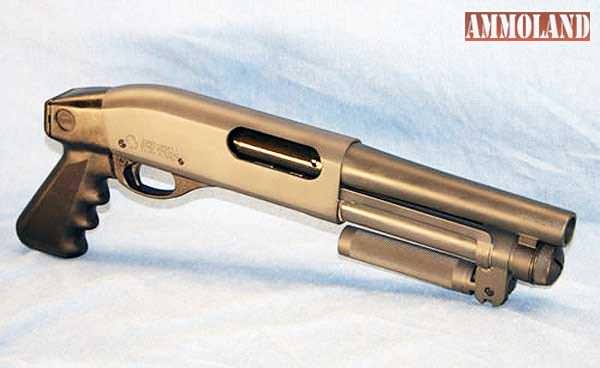By Dean Weingarten


Arizona -(Ammoland.com)- This fake news report keeps on circulating. It is time to debunk the ignorant and misleading story. This “article” appears to have been published by CBS in 2014. The implication of the story is that it tells something about how many firearms are in each state.
As with much fake news, the most important part is the headline. In this case, it is a question: “How heavily armed is your state?” CBS gives the methodology. It is laughable to the point of being bizarre. To the ignorant, the methodology may seem plausible.
To those with knowledge of the subject, it is insane. From cbsnews.com: “How heavily armed is your state?”
Here is a look at per capita weapons data, based on the ATF’s National Firearms Registration and Transfer Record, and 2013 data from the U.S. Census.
While the ATF’s National Firearms Registration and Transfer Record is the only accessible list of its kind, it is not all-inclusive. NFA firearms only include the categories regulated by The National Firearms Act of 1934: machine guns, short-barreled rifles, short-barreled shotguns, suppressors, destructive devices like bombs and grenades, concealable devices with the ability to discharge a shot through the energy of an explosive, and any firearm with a bore over half an inch that has not been determined to have a legitimate sporting use.
In the United States there are about 400,000,000 privately owned firearms. The numbers on the National Firearms Registration and Transfer Record, (from 2013, as used in the NBC article) show a total of 3,510,980 “firearms”. That is less than 1 percent of the total firearms in the nation.
Of those listed as “firearms” in the NFA, the vast majority are “destructive devices” and silencers, which make up 2.7 million items. That leaves machineguns, short barreled shotguns and short barreled rifles at about 811,000 actual firearms, or less than 1/4 of 1 percent of the firearms in the United States.
A large number of them are owned by police departments and government agencies. Consider the District of Columbia. In the CBS article, it is listed as number two in the nation for per capita “registered firearms”. But the guns on the registry are not legal for private people to own in D.C.
It is illegal to possess the following firearms in D.C.:
- Sawed-off shotguns
- Machine guns
- Short-barreled rifles
- An assault weapon
- A .50 BMG rifle
The guns on the NFA registry in D.C. are owned by government agencies, which are exempt from the D.C. gun bans.
To sum up.
The headline is so misleading as to be bizzare.
The database used is for exotic, highly regulated items that make up less than 1 percent of the firearms in the United States.
Most of the items (75%) are only “firearms” in the convoluted legalese of the National Firearms Act. The are destructive devices and silencers, not firearms. Actual firearms in the data base, in the common usage of the word, only make up 1/4 of 1 percent of the privately owned firearms in the United States,
Large numbers of the items in the database are owned by police or government agencies, not private citizens.
It is hard to image using a set of data more likely to mislead about the relative numbers of firearms in a state than the NFA data set. Simply using the census data would be closer to reality.
©2017 by Dean Weingarten: Permission to share is granted when this notice is included.
About Dean Weingarten:
Dean Weingarten has been a peace officer, a military officer, was on the University of Wisconsin Pistol Team for four years, and was first certified to teach firearms safety in 1973. He taught the Arizona concealed carry course for fifteen years until the goal of constitutional carry was attained. He has degrees in meteorology and mining engineering, and recently retired from the Department of Defense after a 30 year career in Army Research, Development, Testing, and Evaluation.
